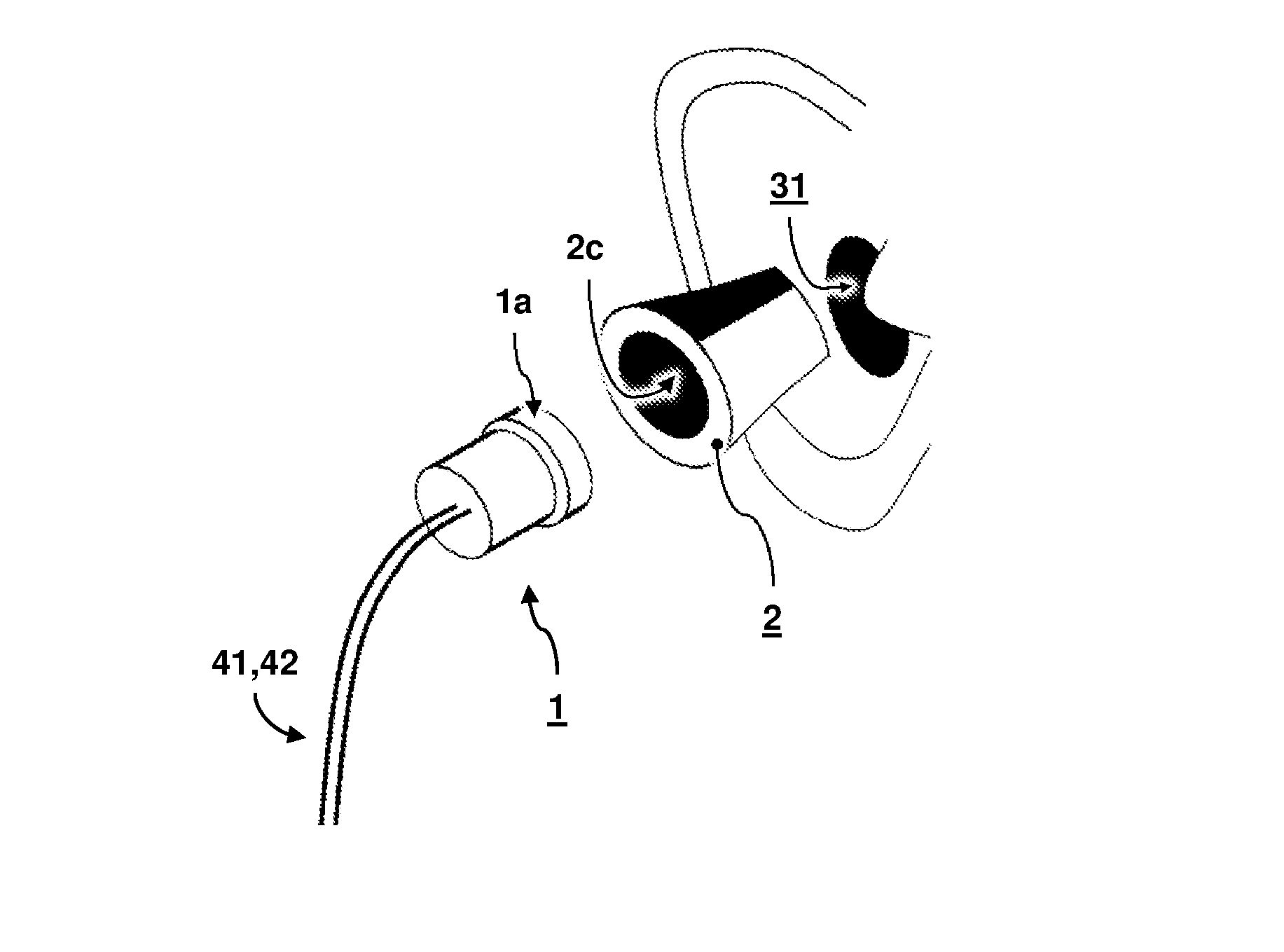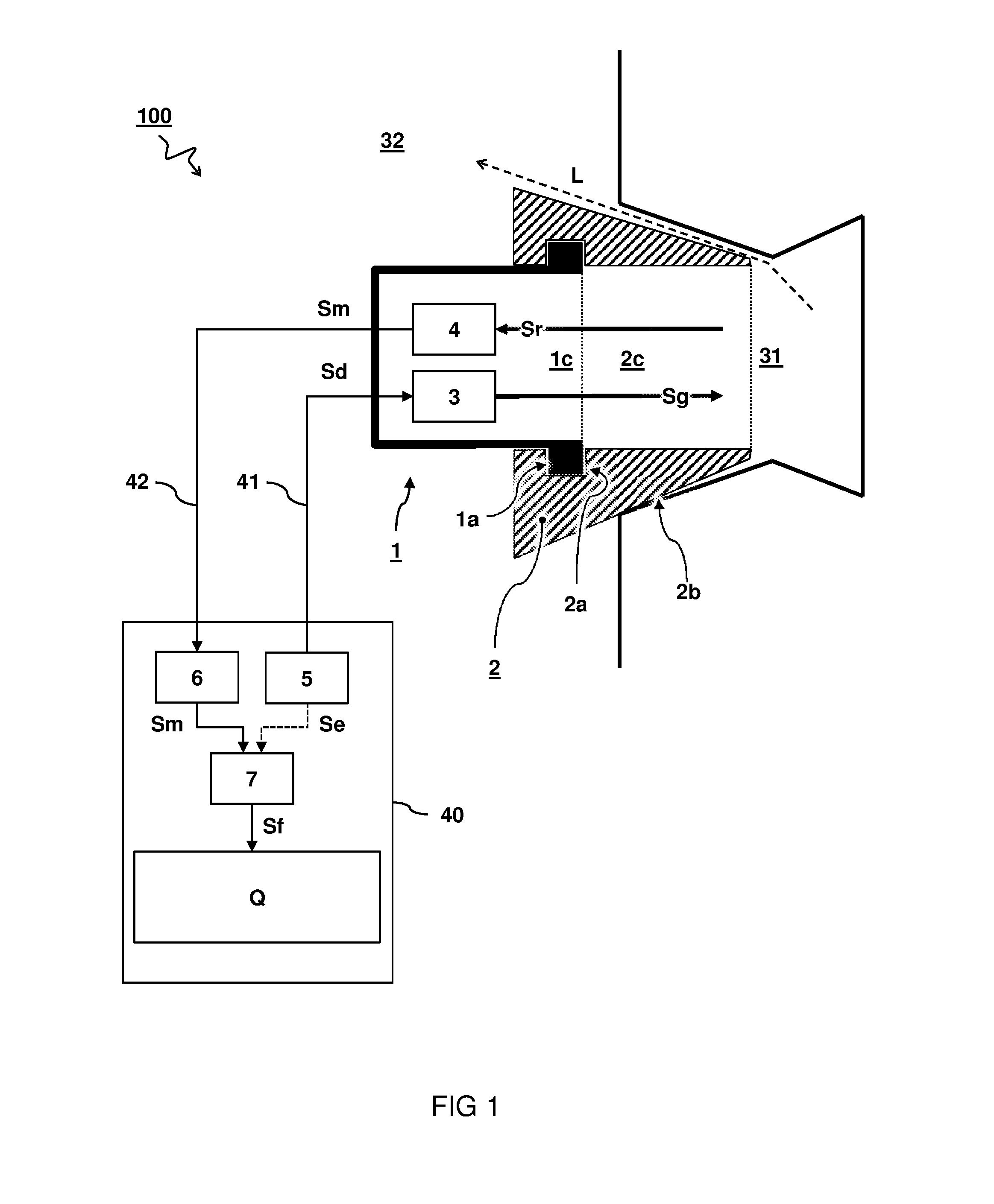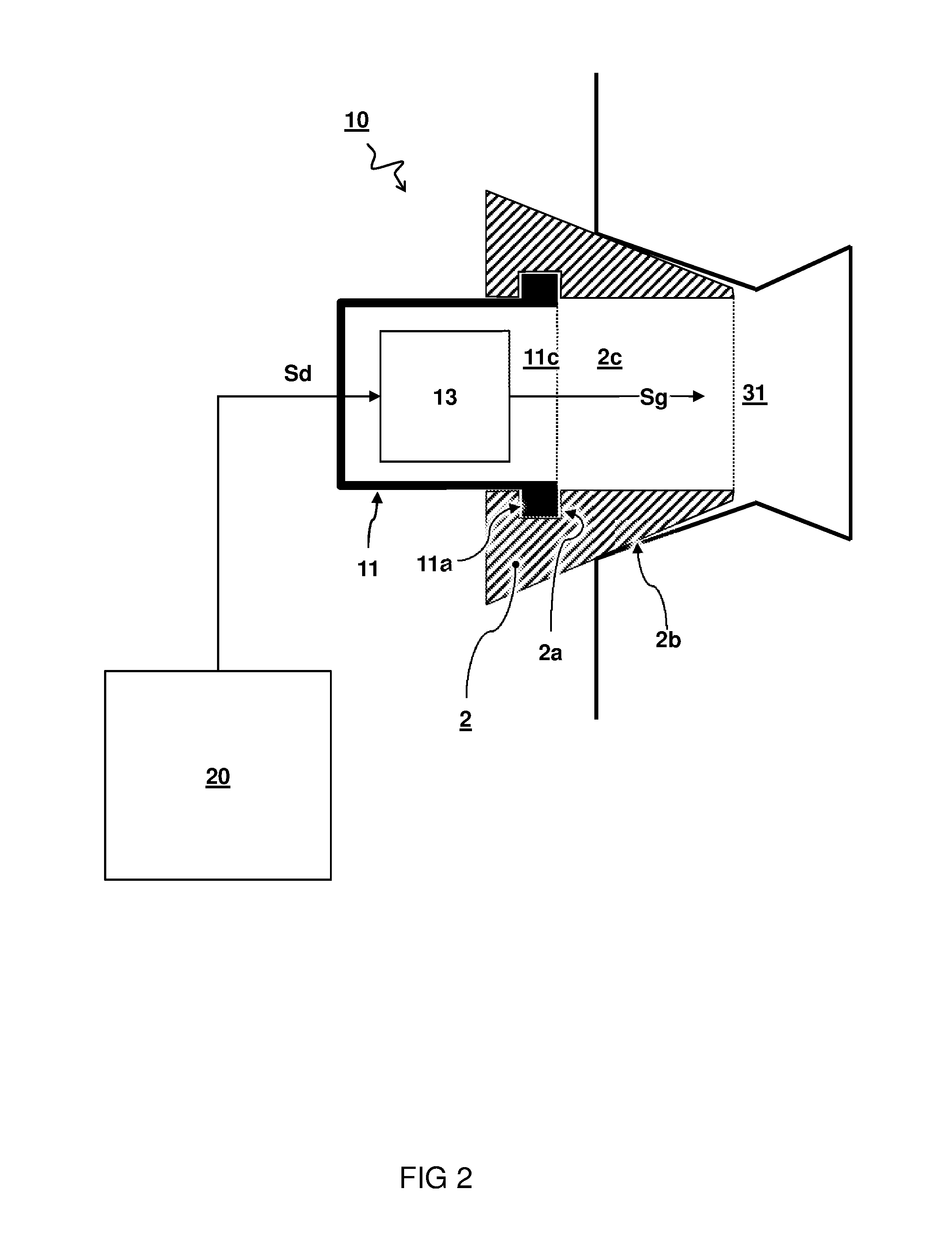Method and system for testing a mould shape quality of a user-customized ear mould
- Summary
- Abstract
- Description
- Claims
- Application Information
AI Technical Summary
Benefits of technology
Problems solved by technology
Method used
Image
Examples
first embodiment
[0043]FIG. 5A shows a test housing 1 and an ear mould 2. The test housing 1 comprises wiring 41 connected to acoustic generator 3 and wiring 42 connected to microphone 4. The test housing 1 can be connected to the ear mould 2 by means of the outer contour 1a fitting into the clamping structure 2a. The ear mould 2 comprises an outer contour 2b that is custom designed to acoustically fit into an ear canal (not shown here). When connected, the microphone 4 allows to measure sound played with the acoustic generator 3, also referred to as a receiver or loudspeaker. In particular, in the embodiment shown, the microphone 4 is capable of measuring the sound level in the sound path between the loudspeaker and the eardrum, at least when the test housing 1 is connected to the ear mould 2.
second embodiment
[0044]FIG. 5B shows a test housing 1 comprising a moving coil driver as the acoustic generator 3 with a microphone 4 enclosed in the back volume. The acoustic generator 3 comprises a cone 3a and magnet 3b. The acoustic generator 3 is connected by wiring 41 and the microphone 4 is connected by wiring 42. In the embodiment, the microphone 4 is integrated in or situated just behind the receiver unit, i.e. acoustic generator 3, measuring the sound in the loudspeaker's inner volume that is acoustically connected to the chamber of the test housing behind the moving coil unit.
third embodiment
[0045]FIG. 5C shows a test housing 1 wherein the acoustic generator 3 comprises a balanced armature receiver. In the embodiment, the microphone 4 is situated in the chamber of the test housing behind the receiver unit 3 acoustically connected to the receiver unit through its vent 3v measuring the sound in the chamber behind the loudspeaker unit.
[0046]In one embodiment, the microphone 4 is located opposite the acoustic generator 3 with respect to the open end 1c of the housing 1. In other words, the acoustic generator 3 is arranged between the microphone 4 and the open end 1c. In this way, the wiring 42 connecting to the microphone 4 does not have to pass the acoustic generator 3. An advantage of having the microphone 4 located opposite the acoustic generator 3 with respect to the open end 1c, e.g. as sketched in FIGS. 5B and 5C, is that the diameter of the test housing 1 can be smaller, which makes it easier to connect the test housing to customized ear moulds of users with a relati...
PUM
 Login to View More
Login to View More Abstract
Description
Claims
Application Information
 Login to View More
Login to View More - R&D
- Intellectual Property
- Life Sciences
- Materials
- Tech Scout
- Unparalleled Data Quality
- Higher Quality Content
- 60% Fewer Hallucinations
Browse by: Latest US Patents, China's latest patents, Technical Efficacy Thesaurus, Application Domain, Technology Topic, Popular Technical Reports.
© 2025 PatSnap. All rights reserved.Legal|Privacy policy|Modern Slavery Act Transparency Statement|Sitemap|About US| Contact US: help@patsnap.com



